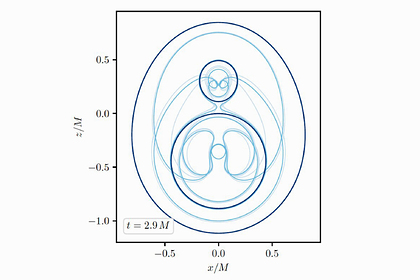Scientists in Germany and Canada have uncovered the internal structure of merging black holes unraveled what happens to the visible horizons during the merger of two non-rotating black holes. According to an article published in the journal Physical Review Letters, the original horizons disappear, merging with other horizon-like structures. A summary of the scientific work is described in a press release on Phys.org. While the visible horizon may coincide with the event horizon of a black hole, these terms do not always describe the same thing, especially in the case of an oscillating black hole. In this case, the visible horizon is necessarily located within the event horizon and is a boundary, within which all light-like curves lead into the black hole. Outside the visible horizon, light can still move away from it, but it is not destined to leave the wider event horizon, which in this case is called



